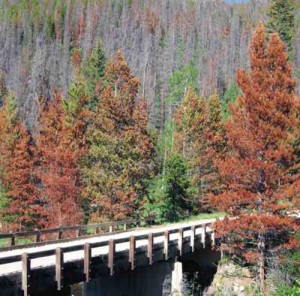Review by Forrest Whitman
Railroad History – December 2007 – Colorado Central Magazine
Road to Riches – The Great Railroad Race to Aspen
by Cathy L. Clamp and C. T. Adams
Published in 2007 by Western Reflections
ISBN 1-890437-84-0
It was 1887 and the race was on! Who would build the first rails to Aspen, which was booming on silver with coal nearby? The Colorado Midland was first off the block with a line from Leadville up through the high country, the Hagerman tunnel, and down to the Roaring Fork Valley. The Midland was financed largely by the Union Pacific and the U.P. intended to kill the competition, the Denver and Rio Grande, which was then nicknamed the “baby road.”
The D&RG wasn’t in good shape for the race. It had been recently re-organized by bankruptcy courts; the Santa Fe had just blatantly broken the “Treaty of Boston,” which forbade it to build in Rio Grande territory; and the D&RG was slim on cash.
New York investors had backed away from the D&RG, leaving only the London investors on board. Nonetheless, William Jackson Palmer and David Moffat decided to take the plunge and go for Aspen. It was a desperate gamble, and they did it without the permission of their investors. Whoever reached Aspen first might control western Colorado, and the Rio Grande Railroad might cease to run if it wasn’t there first.
Actually things didn’t play out in quite that dramatic a fashion. The two railroads reached Aspen within a few months of each other and both served Aspen for many years. There was competition for the best route through town and a long court case over that, but basically the two roads co-existed. That part of the history doesn’t make for a good novel, though, so this one ends as the Rio Grande gets there first, which was actually how it happened.
This novel by Clamp and Adams is worth reading just for the railroad history they present so well. It’s obviously a first novel though. Most of the dialog is pretty stilted, something I was mostly able to overlook.
The authors use the standard technique of telling the tale through the eyes of the hero. Luke Ballister is a composite figure based on several “supers” pushing the D&RG through. Historically they built narrow-gauge first, but with ties wide enough for eventual standard-gauge as in the novel. They built from Red Cliff through Glenwood Canyon and up the Roaring Fork valley to Aspen using 1,000 men and 600 animals and keeping to a 2% grade the whole long way. They did it in eight months — a really amazing feat.
Next time you ride the Amtrak through Glenwood Canyon on your way to San Francisco, relax in the bar car and close your eyes for a second. You’re going over rails that go through a canyon pronounced “absolutely impenetrable” by Denver papers in 1887. The men who built it on the ground were an astonishing breed. The novel’s “Gandy dancers” are accurately depicted. These were men of all ethnic backgrounds and predilections and they were tough enough to do the job. They were paid double and did, in fact, work night and day for eight months. They were often “troublesome” as the novel depicts, but here the novel departs a bit from the history.
It’s unfortunate that the authors chose to push the tale a bit when they characterized the track crews. I spent many a night chatting with those men back in my own brakeman days. They tended to be Mexicans (what in our newly “nativist” Colorado we’d call “illegals” ). Historically they didn’t desert the job at the first opportunity, nor did they fight and drink every night as in the novel. They had to get to work after all. It’s also quite unlikely that any gang bosses really beat anyone to death. With eight months to build eighty-six miles of track though an “impossible” canyon, the gang bosses needed all the co-operation they could get.
I found I could predict the plot of this book as I read along. Anyone who ever read those short stories in the old Railroad Age magazine could tell what was going to happen next. Ballister, our hero, does the job. He also stops the sabotage of a Rio Grande train by the Midland agents. He saves someone from death in the river and pulls a crew out of a tunnel where they’ve been overcome. And, yes, he does get the girl (named Maribelle), even though he pursues her in a doltish fashion. I’m not giving anything away. You knew the hero would do the job, save the day, and get the girl, but that’s not the point. The point is that this little novel brings alive a fine saga of Colorado railroading.
Clamp and Adams have done a commendable job of railroad research here. Even rail historians may pick up a new fact or two. Details such as why the celebration in Aspen began one and one-half hours early will surprise some. The hours the authors spent reading old telegrams between the construction crew and headquarters in Denver come through too. The whole novel has an authentic “construction” feel even if the eventual historical outcome of the “race” is not mentioned.
This is a fast-paced short read that pulls you along. I finished it in two nights, sitting by the stove in my caboose here in Rollinsville. I usually tune out the train whistles tooting down below on their way to and from Glenwood Canyon, but the novel got me to listen.

